Texture refers to the relative proportions of particles of various sizes such as sand, silt and clay in the soil. The proportions of the separates in classes commonly used in describing soils are given in the textural triangle shown in Fig.1.5. In using the diagram, the points corresponding to the percentages of silt and clay present in the soil under consideration are located on the silt and clay lines respectively. Lines are then projected inward, parallel in the first case to the clay side of the triangle and in the second case parallel to the sand side. The name of the compartment in which the two lines intersect is the class name of the soil in question. For examples a soil containing 15% clay, 20% silt and 65% sand is sandy loam and a soil containing equal amounts of sand, silt and clay is clay loam.
The percentages of sand, silt and clay in a soil could be determined in a soil laboratory by two standard methods - hydrometer method and pipette method (Black et al., 1965a). Both methods depend on the fact that at any given depth in a settling suspension the concentration of the particles varies with time, as the coarser fractions settle at a faster rate than the finer (Fig. 1.6).
In the field, soil texture could be estimated by the following methods (Fig. 1.7).
(i) Feel method. In this method, the soil is moistened with water and rubbed between the thumb and fingers. The way the wet soil “slicks out” gives a good idea of the clay content. The sand particles are gritty, the silt has a floury or talcum - powder fell when dry and is only moderately plastic and sticky when wet. Accuracy of this method depends largely on experience.
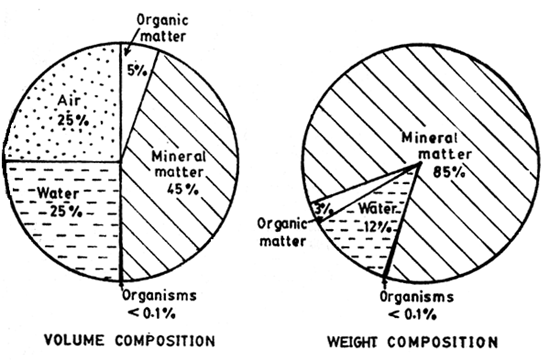
Fig. 1.3. Volume and weight composition of a soil (Percentage of air and water varies according to moisture saturation of soil)
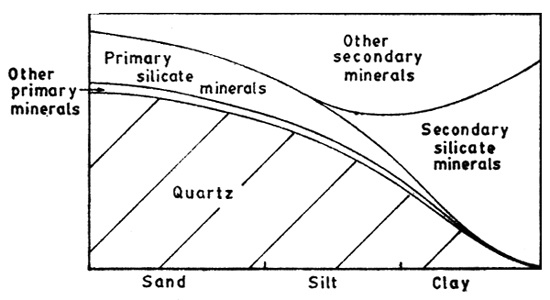
Fig. 1.4. Mineralogical composition of soil (area within the figure denotes the relative abundance of minerals)
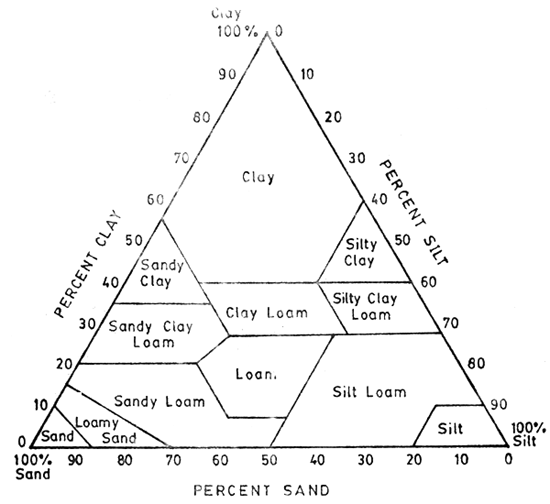
Fig. 1.5. Soil textural triangle
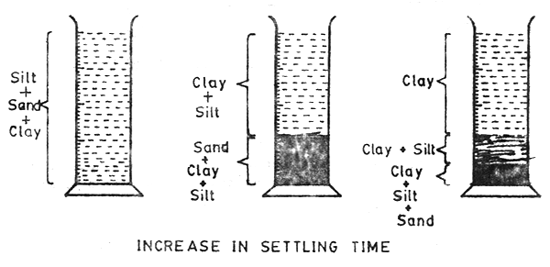
Fig. 1.6. The settling of particles in a soil suspension
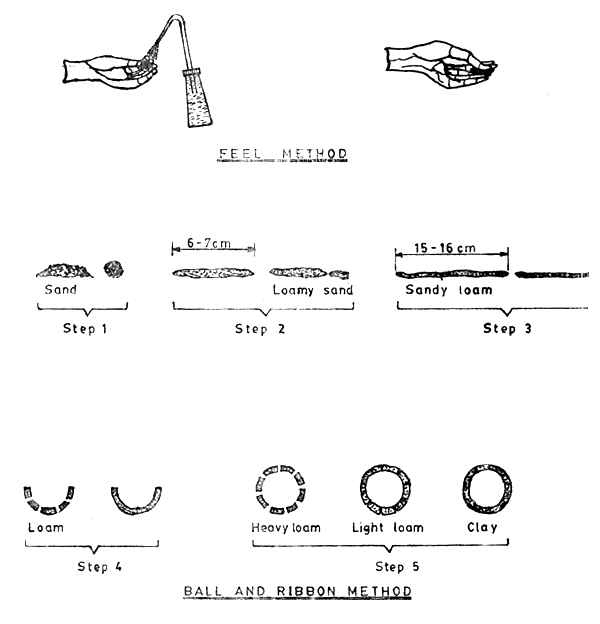
Fig. 1.7. Field methods of soil texture estimation (Feel method and Ball and ribbon method)
(ii) Ball and ribbon method: The procedure of this method as described by Coche and Laughlin (1985) is as follows: Take a handful of soil and wet it so that it begins to stick together without sticking to the hand. A ball of about 3 cm diameter is made and put down. If it falls apart it is sand. If it sticks together roll the ball into a sausage shape 6 – 7 cm long. If it does not remain in this form it is loamy sand. If it remains in this shape, continue to roll until it reaches 15 – 16 cm long. If it does not remain in this form, it is sandy loam. If it remains in this shape, try to bend the sausage into a half circle and if it doesn't, it is a loam. If it does, bend the sausage to form a fullccircle and if it doesn't it is heavy loam. If it does with slight cracks in the sausage, it is light clay. If it does without any cracks, it is a clay.
(iii) Ball throwing method: The texture of the soil can be inferred by the way a ball of soil acts when it is thrown at a hard surface such as a wall or a tree (Fig.1.8). The steps to be followed in this method as described by Coche and Laughlin (1985) is as follows: Throw a ball of soil to a tree or wall 3 m away. If the soil is good only for splatter shots when either wet or dry, it has a coarse texture (loamy sand). If there is a “shot gun” pattern when dry and it holds its shape against medium range target when wet, it has a moderately coarse texture (sandy loam). If the ball shatters on impact when dry and clings together when moist but does not stick to the target it has a medium texture (loam, sandy clay loam, silty clay loam). If the ball holds its shape for long - range shots when wet and sticks to the target but is fairly easy to remove it has a moderately fine texture (clay loam). If the ball sticks well to the target when wet and becomes a very hard missile when dry, it has a fine texture (clay).
The usual mechanical analysis of soils in the laboratory gives the percentages of the three size fractions, sand, silt and clay. For special uses, the same methods of laboratory analyses (pipette method or hydrometer method) can provide a much more detailed analysis giving further breakdown of the relative amounts of soil particles for more size classes in the form of a table or graph. The data in the graphical form is given as a particle - size frequency curve (PSF curve). PSF curves for selected soils are shown in Fig. 1.9. The vertical axis represent the cumulative percentage of occurrance of the various particles sizes and the horizontal axis represents the logarithms of the particle size. The vertical axis in the left hand side relate to the percentages of particles passing through sieves of a particular size and the vertical axis in the right hand side relate to the percentages of particles not passing through sieves of a particular size.
The more vertical the PSF curve or part of the curve, the more uniform the particle size; a vertical line represents a perfect uniform particle size. The more inclined the curve or part of it, the greater the difference between the particle sizes (i.e. smaller porosity and higher compaction). The inflexion point of the curve shows the most frequent particle size by weight. Fine textured soils have their curves towards the right hand side of the graph and the coarse textured soils to the left hand side. From the PSF curves, the percentages of silt, sand and clay can be calculated and using the textural triangular diagram the texture could be determined.
Soil texture is an important soil parameter determining the suitability of a site for aquaculture. A clayey soil stabilises pond bottom besides the fact that it adsorb large quantity of nutrients and release them slowly over a long period to the overlying water. The clayey soil normally holds higher amounts of organic matter than light textured soils and thereby increase the productivity of the pond. It should be noted that too clay a soil (very sticky clay) may not be very satisfactory as it may give rise to fixation of phosphorus and create other physico-chemical biological problems. Such soils may give rise to cracks on draining the ponds, thereby increase seepage losses.
The term texture is used in reference to the size of individual soil particles but when the arrangement of the particles is considered the term structure is used. Structure refers to the aggregation of primary soil particles (sand, silt and clay) into compound particles or cluster of primary particles which are seperated by the adjoining aggregates by surfaces of weakness. Structure modifies the effect of texture in regard to moisture and air relationships, availability of nutrients, action of microorganisms and root growth. E.g. a highly plastic clay (60% clay) is good for crop product if it has a well developed granular structure which facilitates aeration and water movement. Similarly a soil though has a heavy texture, can have a strongly developed structure, thus making it not very satisfactory for aquaculture as a result of this soil allowing high seepage losses.
Structure is defined in terms of grade, class and type of aggregates.
Grade: Grade of structure is the degree of aggregation and expresses the differential between cohesion within aggregates and adhesion between aggregates. These properties vary with the moisture content of the soil and it should be determined when the moisture content is normal - not when unusually dry or unusually wet. The four major grades of structure rated from 0 to 3 are listed below.
| 0 - Structureless: | no observable aggregation or no definite orderly arrangement of natural lines of weakness. Massive if coherent; single grain if noncoherent. |
| 1 - Weak: | That degree of aggregation characterised by poorly formed indistinct aggregates that are barely observable in place. When disturbed, soil material that has this grade of structure breaks into a mixture of few entire aggregates many broken aggregates and much unaggregated material. |
| 2 - Moderate: | Well formed distinct aggregates that are moderately durable and evident but not distinct in undisturbed soil. When disturbed, they break down into a mixture of many distinct entire aggregates, some broken aggregates and little unaggregated material. |
| 3 - Strong: | Durable aggregates that are quite evident in undisturbed soil that adhere weakly to one another. When removed from the profile the sokl material consists very largely of entire aggreates and includes few broken ones and little or no nonaggregated material. |
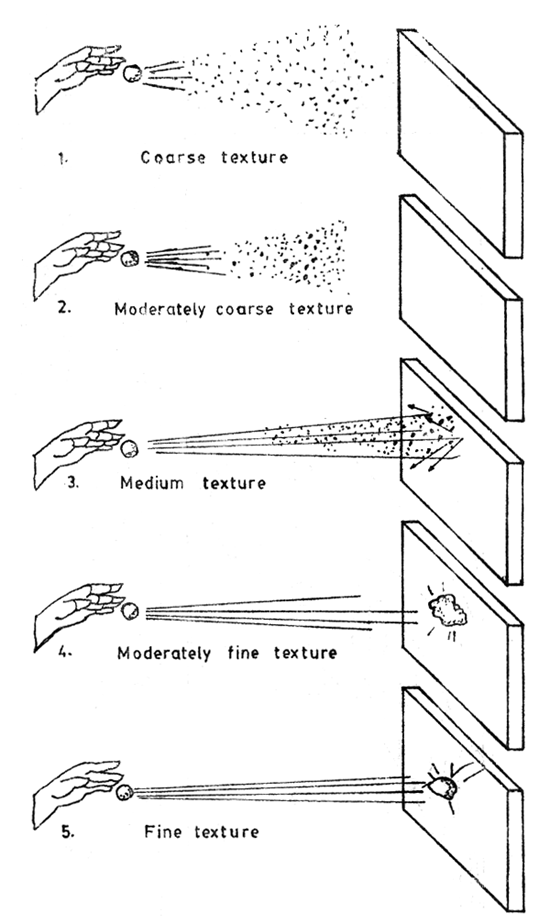
Fig. 1.8. Field methods of soil texture estimation (Ball throwing method)
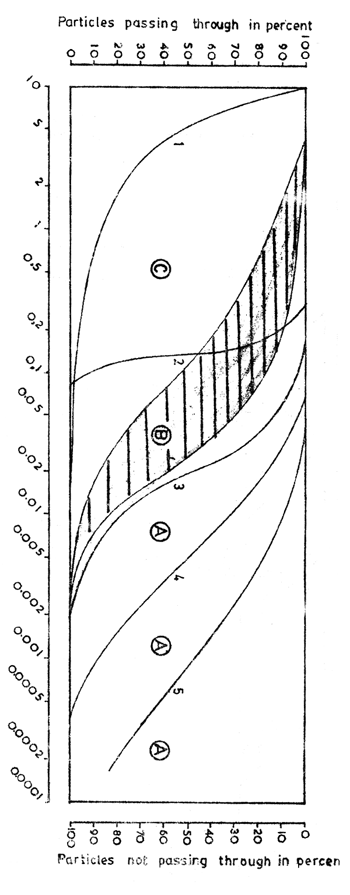
Diameter of particle (mm)
| 1 Gravel and sand(old alluvium) | A | Soil suitable for pond bottom if coefficient of permeability is less than 5 × 10-6 m/s |
| 2 Sand | ||
| 3 Silt | B | Soil suitable for building dikes without impermeable clay core |
| 4 Calcareous clayey soil (marl) | C | Soil suitable for pond bottom or dike only after modification of soil using amendments. |
| 5 Heavy clay |
Fig. 1.9. Particle size frequency (PSF) curves for selected soils
Class: The Class of structure describes the average size of individual aggregates and Type describe their form or shape (Fig. 1. 10). The various class divisions are: very fine or very thin, fine or thin, medium, coarse or thick and very coarse or very thick.
Water movement and drainage are poor in soils having blocky, prismatic, columnar and platy structures. These structured soils especially the platy type are most suitable for aquaculture.
is the resistance of a soil to deformation or rupture and is determined by the cohesive and adhesive properties of the soil mass. This is a term used to designate the manifestation of the cohesive and adhesive properties of soil at various moisture contents. A knowledge of the consistence of the soil is important in tillage operations, traffic and pond constructions. Consistence gives also an indication of the soil texture.
Consistence is described for three moisture levels:
- Wet soil - non sticky, slightly sticky, sticky, very sticky; non plastic, slightly plastic, plastic and very plastic.
- Moist soil - loose, very friable, friable, firm, very firm, extremely firm.
- Dry soil - loose, soft, slightly hard, hard, very hard, extremely hard.
Description of the consistence terms mentioned above can be obtained from “Guidelines for Soil Profile Description” by FAO (FAO, 1974).
of soil is the mass per unit volume of soil particles (soil solid phase) - expressed in g/c.c. Most soils have particle density of about 2.6 g/cc. Presence of organic matter decrease the density and iron compounds increase the density.
of soil is the mass of soil per unit volume of soil (volume includes both soil and pores) - expressed in g/c.c.

Particle density can be determined using specific gravity bottle technique and bulk density by taking soil core samples of known volume in the field and determining the even dry weight (Black et al., 1965a). Water and air movements through soil depends on the pore space and the size distribution of the pores (microPores and macropores). Lower the pore space or higher the bulk density of the soil, the higher the suitability of the soil for aquaculture.
From the previous section it could be noted that consistence of soils changes with the amount of moisture in the soil. Atterberg limits correspond to the moisture content at which a soil sample changes it's consistence from one state to the other. Liquid limit (LL) and plastic limit (PL) are two important states of consistence. Liquid limit is the percentage moisture content at which a soil changes with decreasing wetness from the liquid to the plastic consistence or with increasing wetness from the plastic to the liquid consistence, whereas the plastic limit is the percentage moisture content at which a soil changes with decreasing wetness from the plastic to the semi-solid consistence or from the semi-solid to the plastic consistence. Plastic index (PI) = LL - PL, is the moisture content range at which the soil remains plastic.

Table III. Typical laboratory tests showing average LL, PL and PI (Coche and Laughlin, 1985)
| Soil type | LL | PL | PI |
| Sands | 20 | 0 | 0 |
| Silt | 27 | 20 | 7 |
| Clays | 100 | 45 | 45 |
| Colloidal clays | 399 | 49 |
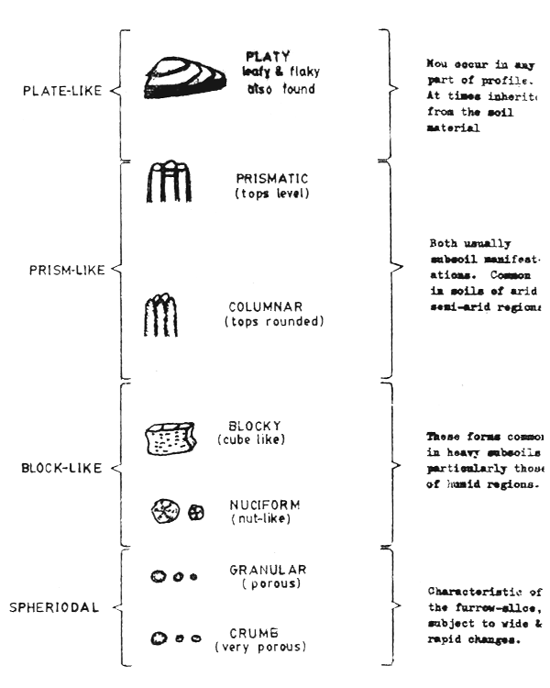
Fig. 1.10. Diagramatic representation of the various types of structures (Buchman and Brady, 1964)
Table III. shows that the heavier the texture of the soil, higher the LL, PL and PI. A soil having high PI, has high compressibility.
According to Coche and Laughlin (1985) critical value of LL of the soil for constructing a pond dike without clay core, should be equal to at least 35% for best compaction results and for the constructing the impervious clay core of a pond dike soil material with LL smaller than 60%, PL smaller than 20% and PI more than 30% should be used.
Soil colour gives an indication of the various processes going-on in the soil as well as the type of minerals in the soil. For example the red colour in the soil is due to the abundance of iron oxide under oxidised conditions (well-drainage) in the soil; dark colour is generally due to the accumulation of highly decayed organic matter; yellow colour is due to hydrated iron oxides and hydroxide; black nodules are due to manganese oxides; mottling and gleying are associated with poor drainage and/or high water table. Abundant pale yellow mottles coupled with very low pH are indicative of possible acid sulphate soils. Colours of soil matrix and mottles are indicative of the water and drainage conditions in the soil and hence suitability of the soil for aquaculture.
Soil colour is described by the parameters called hue, value and chroma. Hue represents the dominant wave length or colour of the light; value, refers to the lightness of the colour; chroma, relative purity or strength of the colour. The colour of the soil in terms of the above parameters could be quickly determined by comparison of the sample with a standard set of colour chips mounted in a note-book called MUNSELL SOIL COLOUR CHARTS (Munsell Soil Colour Charts, 1973). In these charts, the right hand top corner represents the Hue; the vertical axis, the value; and the horizontal axis, the chroma.
is the ability of the soil to transmit water and air. An impermeable soil is good for aquaculture as the water loss through seepage or infiltration is low. As the soil layers or horizons vary in their characteristics, the permeability also differs from one layer to another. Pore size, texture, structure and the presence of impervious layers such as clay pan determines the permeability of a soil. Clayey soils with platy structures have very low permeability.
Permeability is measured in terms of permeability rate or coefficient of permeability (cm per hour, cm per day, cm per sec.).
Permeability rate or coefficient of permeability is determined in the laboratory by measuring the rate of flow of water from a constant head of water through a colomn of soil at specific moisture content and other conditions. It is determined in the field by digging a hole of approximately 30 cm diameter, smearing the sides of the hole with heavy wet clay or lining with plastic sheet and measuring the rate of infiltration of water by filling the hole repeatedly with water and noting the time it takes for the water level to go down by a specific depth.
Coefficient of permeability of soils (pond bottom soils) suitable for aquaculture should be smaller than 5 × 10-6 m/s (Coche and Laughlin, 1985). For more information on this refer to the chapter on “water supply” in this Manual.